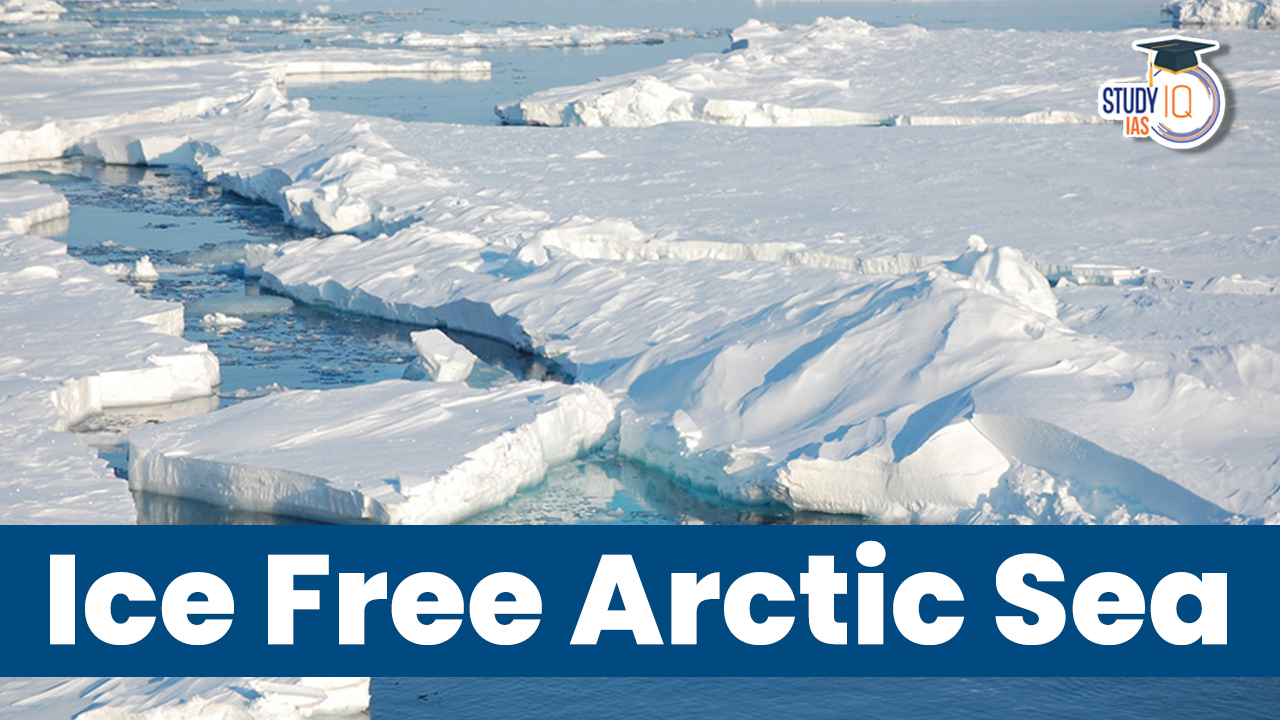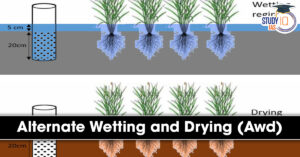Table of Contents
Context: According to a new study published in the journal Nature Communications, Arctic could get its first summer free of sea-ice by as early as the 2030s.
About Arctic Sea
- Arctic Ocean is Earth’s northernmost body of water. It encircles the Arctic and flows beneath it.
- Most of the Arctic Ocean is covered by ice throughout the year—although that is starting to change as temperatures climb.
- In the Arctic Ocean, the sea ice area grows and shrinks over the course of the year.
- Sea ice forms in the winter, increasing sea ice area and usually reaches its maximum extent in March.
- In contrast, sea ice area reduces to its lowest in September, following melting in summer.
Significance of Arctic
- Arctic Global climate and changes in Arctic water temperatures are influenced by sea ice.
- Sea ice plays a crucial part in keeping the Polar Regions cool and preserving the earth’s energy balance since it is bright in colour and has a higher albedo than liquid water.
- By creating a barrier between the somewhat warmer water below and the colder air above, sea ice also helps to keep the air cool.
- Sea ice loss lessens the Arctic region’s cooling influence, and this may start a “feedback loop” where ocean warming brought on by increased solar energy absorption results in even more sea ice loss and more warming.
Highlight of Study
- Sea ice-free Arctic could happen 10 years earlier than previously thought, regardless of the greenhouse gases (GHG) emissions scenario.
- Arctic sea ice area (SIA) has been declining rapidly throughout the year during recent decades with a steeper decline since 2000.
- Satellites monitoring the Arctic have shown the rate of loss to be 13% every year.
- Reason: GHG emissions increases, increased human influence in the Arctic cryosphere and reduction in aerosol emissions since the 1980s following the El Chichon volcanic eruption to be the drivers of the Arctic SIA reduction, observed throughout the year.
Impact of Decline in Arctic Sea Ice
- Temperatures: It could lead to a weakening of the polar jet streams, which are currents of air that form when warm and cold air meet.
- This weakening has been linked to rising temperatures and heatwaves in Europe as well as unseasonal showers in northwest India.
- Food: Polar vortexes, increased heat waves, and unpredictability of weather caused by ice loss are already causing significant damage to crops on which global food systems depend.
- Wildlife: When there’s less sea ice, animals that depend on it for survival must adapt or perish. Loss of ice and melting permafrost spells trouble for polar bears, walruses, arctic foxes, snowy owls, reindeer, and many other species.
- As they are affected, so too are the other species that depend on them, in addition to people.
- Wildlife and people are coming into more frequent contact – and often conflict – as wildlife encroach on Arctic communities, looking for refuge as their sea ice habitat disappears.
- Permafrost: Arctic ice and permafrost—ground that is permanently frozen—store large amounts of methane, a greenhouse gas that contributes to climate change.
- When it thaws, that methane is released, increasing the rate of warming.
- This causes more ice and permafrost to thaw or melt, releasing more methane, causing more melting.
- As we lose more ice more quickly and see more rapid permafrost melt, we will start seeing the worst climate change predictions come true.
- Impact on Native People: It affects the traditional subsistence hunting lifestyle of indigenous Arctic populations such as the Yup’ik, Iñupiat, and Inuit.
Positive Impact of Decline in Arctic Sea Ice
- Commercial And Economic Opportunities with the opening of shipping lanes and increased access to natural resources in the Arctic region.
- As ice melts, new shipping routes open in the Arctic. These routes will be tempting time-savers, but incredibly dangerous. Imagine more shipwrecks or oil spills like the Exxon-Valdez in areas that are inaccessible to rescue or clean-up crews.
- Mineral Resources and Hydrocarbons: Arctic region has rich deposits of coal, gypsum and diamonds and also substantial reserves of zinc, lead, placer gold and quartz. The Arctic contains a wealth of unexplored hydrocarbon resources amounting to 30% of the world’s undiscovered natural gas.
- Scientific Exploration: The Arctic meltdown is helping the scientific community to better understand the glacial melt in the Himalayas, which has often been referred to as the ‘third pole’ and has the largest freshwater reserves after the North and South poles.
India and Arctic Ocean
- India does not have an official Arctic policy and its Arctic research objectives have been centered on ecological and environmental aspects, with a focus on climate change.
- India launched its first scientific expedition to the Arctic Ocean in 2007 and opened a research base named “Himadri”at the International Arctic Research Base at Ny-Alesund, Svalbard, Norway in July 2008 for carrying out studies in disciplines like Glaciology, Atmospheric sciences & Biological sciences.
- India has entered into MOU with Norwegian Polar Research Institute of Norway, for cooperation in science, and also with Kings Bay (A Norwegian Government owned company) at Ny-Alesund for the logistic and infrastructure facilities for undertaking Arctic research and maintaining Indian Research base ‘Himadri’ at Arctic region.
- National Centre for Polar and Ocean Research: It is a nodal organisation coordinating the research activities at the stations at the poles.
- In 2019, India has been re-elected as an Observer to the Arctic Council.
Conclusion
- The emphasis should be on forging a global ocean treaty that addresses ocean governance globally and prioritizes resource extraction in a safe and sustainable manner.
- The goal of this agreement should be to ensure international collaboration and cooperation.
Arctic Council
- The Arctic Council is an intergovernmental forum for discussing and addressing issues concerning the Arctic region.
- These include scientific research, and peaceful and sustainable use of resources in the region.
- The Council was established by the 8 Arctic States through the Ottawa Declaration of 1996.
- These are Canada, Denmark, Finland, Iceland, Norway, Russia, Sweden and the US.


 Defence Acquisition Council (DAC): Role,...
Defence Acquisition Council (DAC): Role,...
 Alternate Wetting and Drying (AWD): A Cl...
Alternate Wetting and Drying (AWD): A Cl...
 Makaravilakku Festival: Significance, Ri...
Makaravilakku Festival: Significance, Ri...

























